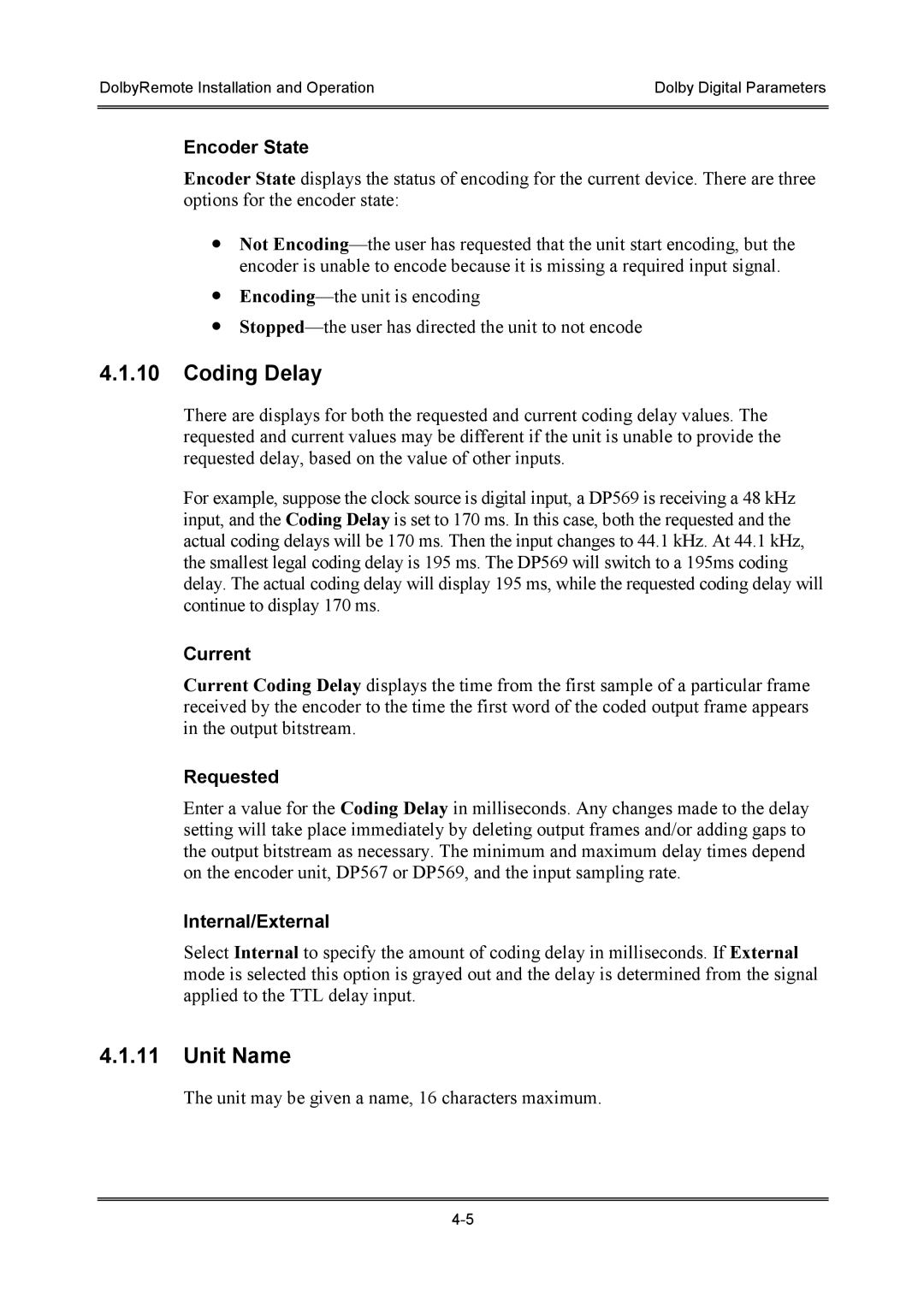DolbyRemote Installation and Operation | Dolby Digital Parameters |
|
|
|
|
Encoder State
Encoder State displays the status of encoding for the current device. There are three options for the encoder state:
•Not
•
•
4.1.10Coding Delay
There are displays for both the requested and current coding delay values. The requested and current values may be different if the unit is unable to provide the requested delay, based on the value of other inputs.
For example, suppose the clock source is digital input, a DP569 is receiving a 48 kHz input, and the Coding Delay is set to 170 ms. In this case, both the requested and the actual coding delays will be 170 ms. Then the input changes to 44.1 kHz. At 44.1 kHz, the smallest legal coding delay is 195 ms. The DP569 will switch to a 195ms coding delay. The actual coding delay will display 195 ms, while the requested coding delay will continue to display 170 ms.
Current
Current Coding Delay displays the time from the first sample of a particular frame received by the encoder to the time the first word of the coded output frame appears in the output bitstream.
Requested
Enter a value for the Coding Delay in milliseconds. Any changes made to the delay setting will take place immediately by deleting output frames and/or adding gaps to the output bitstream as necessary. The minimum and maximum delay times depend on the encoder unit, DP567 or DP569, and the input sampling rate.
Internal/External
Select Internal to specify the amount of coding delay in milliseconds. If External mode is selected this option is grayed out and the delay is determined from the signal applied to the TTL delay input.
4.1.11Unit Name
The unit may be given a name, 16 characters maximum.
